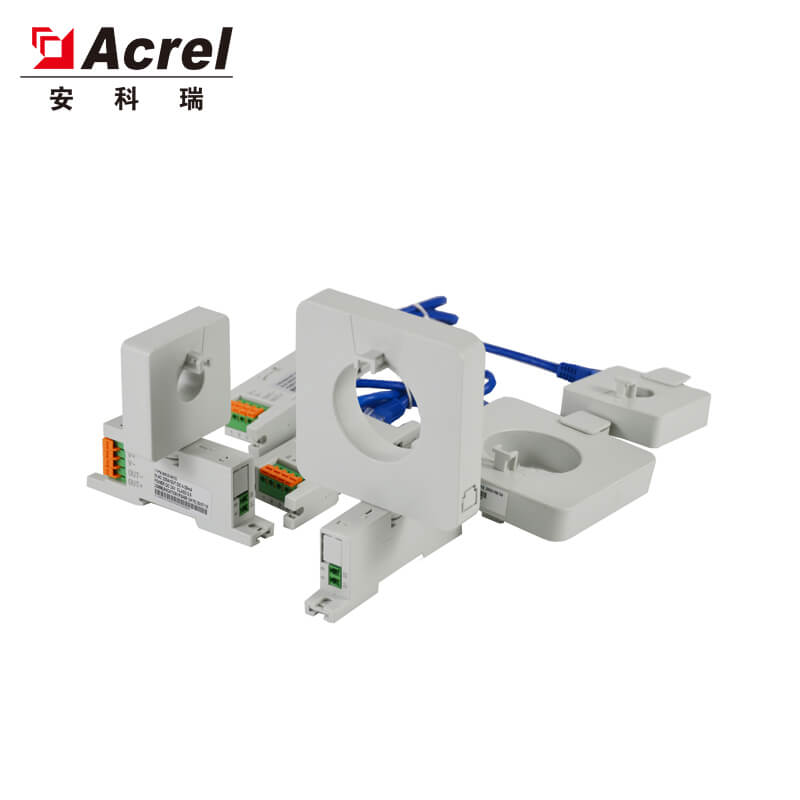Digital Electric Energy Meter VS Electronic Electric Energy Meter
(2023年10月03日)https://www.acrelenergy.com/comparison-of-working-principle-of-digital-electric-meters.html
The digital electricity meter working principle, the input signal is obtained by the traditional transformer PT, CT, after the signal conditioning is carried out through the data acquisition and processing module, the analog signal is collected by the electric energy measurement chip in the special measurement processing system, and the electric energy is calculated. The control unit (Micro Controller Unit, MCU) controls the normal operation of the entire system.
The principle of the digital electric energy meter, the input signal is obtained by the front-end merging unit, the optical signal message conforming to the IEC 61850 protocol, the merging unit realizes analog signal acquisition, the internal optical module of the digital electric energy meter obtains the collected data through the optical fiber, and the internal real-time operation and processing system ( Generally it is FPGA, DSP chip) parsing messages and metering electric energy.
Hardware structure and functional modules of the energy meters
The electronic watt-hour meter uses a dedicated measurement processing system (usually an electrical energy measurement chip), and its internal circuit integrates modules such as A/D sampling, filtering, and electrical energy calculation. The digital electric energy meter adopts a real-time operation and processing system inside to realize functions such as protocol analysis and electric energy calculation.
The difference is reflected in: the electronic energy meter uses a dedicated energy metering chip to calculate the electrical energy. The digital electric energy meter adopts the optical module and MCU to complete the electric energy calculation. The dedicated electric energy metering chip has a built-in digital filter, but this module is generally not available in digital electric energy meters, and the hardware structure of digital electric energy meters is relatively simple.
Signal input form and sampling method of the energy meters
The input of the electronic electric energy meter is connected to the secondary output of the traditional transformer, which is an analog signal. The electric energy metering chip is used inside the electric energy meter to collect the signal to obtain the grid voltage and current parameter data. The output of the digital watt-hour meter input, junction, and unit is a digital message signal. There is no need to sample the signal inside the watt-hour meter, and the sampled value of the secondary side of the power grid is obtained by parsing the message.
The difference is reflected in: the input of the electronic electric energy meter is an analog quantity, and A/D sampling is required. The input of the digital electric energy meter is a digital message, which needs to be analyzed.
Electric energy measurement algorithm of the energy meters
The energy measurement algorithms commonly used in electronic energy meters include windowed interpolation FFT and dot product. The conversion accuracy of the internal A/D module of the energy measurement chip is usually 22 to 24 bits, the sampling frequency is 12.8 kHz, and there is filtering inside the chip. The device can effectively filter out the noise signal and restore the original signal to a high limit. The two electric energy measurement algorithms adopted can meet the accuracy requirements of electric energy measurement.
The input signal of the digital electric energy meter completes A/D sampling in the front-end merging unit. At present, the merging unit is shared by measurement, control, and metering. The conversion accuracy of the A/D module is usually 16 bits, and the sampling frequency is 4 kHz (which will be considered in the third-generation smart substation Special merging unit for measurement and increase the sampling frequency to 12.8 kHz). At the same time, the noise filter is generally not designed in the table. When the load is complicated, the original signal restoration is low, and in the actual operating environment, the message transmission process is affected by external interference. Data will be lost due to bit errors. Existing digital electric energy meters generally use the dot product sum algorithm. Under complex grid load conditions, the accuracy of electric energy measurement needs to be further studied.
In a word, the working principle of digital electric energy meters is quite different from that of electronic electric energy meters. Corresponding to the above differences, the two should be distinguished from three aspects in detection: First, the basic error detection, the basic error of the electronic watt-hour meter is mainly affected by the internal A/D sampling, and the error will vary depending on the external environment and load conditions. , The digital electric energy meter has no A/D sampling, and there is no need to consider the influence of different loads on its error; the second is the sampling value report detection, the digital electric energy meter adopts the message transmission signal, and the sampling value message test experiment should be carried out; the third is the electric energy measurement In terms of algorithm, the structure adopted by the digital electric energy meter is simpler, and the adaptability test of the metering algorithm under different load conditions should be carried out.
As a professional power meter manufacturer, we provide 3 phase energy meter, din rail meter, precision dc current shunts, power meter china and etc. Want to know more, contact us.
- このできごとのURL:


コメント